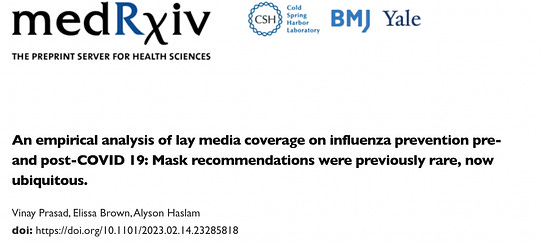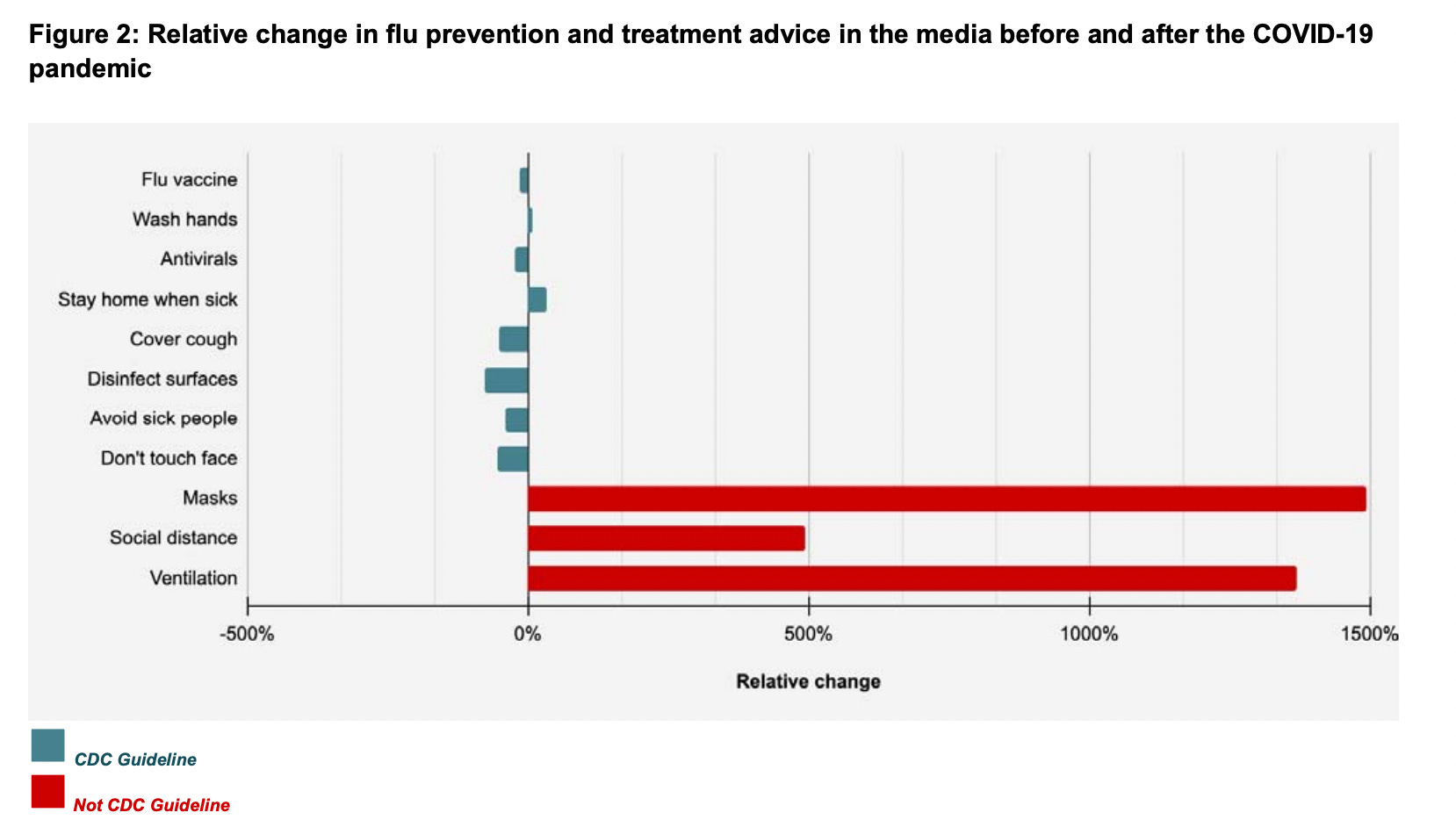Media advice on how to avoid Flu changed after COVID; But, the evidence didn’t
February 23 | Posted by mrossol | Health, ScienceFeb. 23, 2023
Source: Media advice on how to avoid Flu changed after COVID; But, the evidence didn’t
It is my pleasure to introduce this guest post by Elissa Brown, who is going to talk about our new paper. Read it here! We studied the media’s advice regarding influenza before and after COVID.
Here is the percent change in recommendation pre to post COVID.
WOW! Vaccines are down, but suddenly masks, social distancing and ventilation are the key to defeat influenza. Where is all the new evidence to support these changes? Elissa Brown explains.
Vinay Prasad MD MPH
__
By Elissa Brown
Last fall, I received an email from the head of my daughter’s school suggesting masks would be helpful “as we navigate cold and flu season”. Six months had passed since mask mandates were lifted for schools in the Seattle area, and more than 95% of the kids in our district were vaccinatedagainst COVID-19.
I was surprised to be receiving mask advice for cold and flu season. My understanding was that the best available evidence offered little support for masking as a way to prevent the spread of influenza or a flu-like illness in the community. Furthermore, discourse had been increasing around the potential downsides of masking in schools.
Where was this advice coming from? I am a graduate student at the University of Washington’s School of Public Health with a specific interest in public health communications, so I wanted to understand the basis for this recommendation.
I started by looking at the scientific literature, which showed no changes to the evidence base. The CDC’s official guidelines for flu prevention were almost entirely unchanged from previous years. Specifically, masking was not included. Finally, I looked at mainstream media coverage. It seemed like every news article I clicked on featured physicians and public health experts touting the benefits of masking for flu prevention.
Masks were one piece of a bundled approach to controlling the spread of COVID-19, yet mask mandates were being given major credit for suppressing flu activity. This felt like a leap, and not a very scientific one.
I wondered if masks were ever recommended for flu prevention by experts in the news media prior to the COVID-19 pandemic. I felt it didn’t happen very often, and that I would find a sizable increase in this advice in the post-COVID timeframe. I also wanted to understand whether the media’s presentation of flu advice had changed in other ways since the pandemic, in addition to the mask recommendations.
Our team conducted a systematic search for articles containing flu prevention advice in high circulation newspapers in the United States, before and after the pandemic.
We found a 15-fold increase in the number of articles containing advice to wear a mask to avoid the flu. The number of articles recommending social distancing and improved ventilation also increased significantly, 496% and 1,369% respectively.
Advice to disinfect commonly-used surfaces and to cover your cough or sneeze both declined, 53% and 77% respectively. Maybe you don’t have to do those things if you wear a mask?
The findings confirmed my hypothesis, but they also caused me to stop and think about some of the bigger public health issues we are facing. For example, measles vaccination rates are declining in the United States. I can’t help but wonder whether rapid changes in long-standing advice in one area may be contributing to a failure to heed advice in other areas.
Trust in our nation’s public health systems has declined since the start of the pandemic. A Pew Research Center survey recently found that confidence in medical scientists is now below pre-pandemic levels. Misinformation campaigns and the expanding influence of social media are often blamed for this erosion of trust.
However, it’s possible that dramatic shifts in expert advice communicated through the mainstream media – in the absence of scientific consensus – may also be part of the problem.








Leave a Reply
You must be logged in to post a comment.